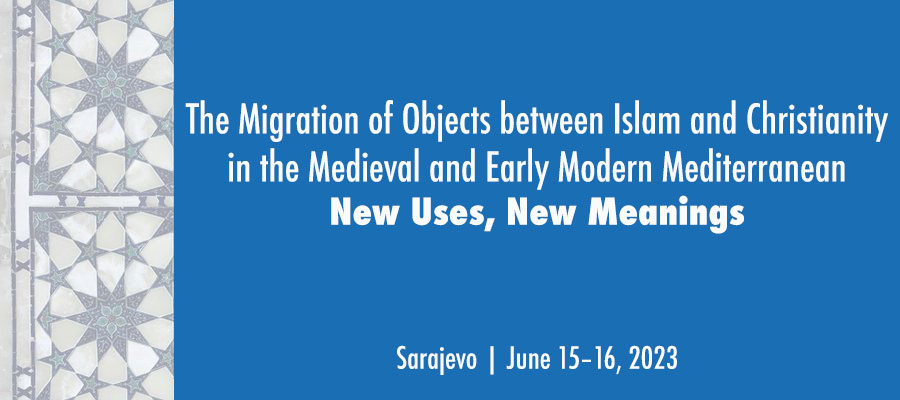The Migration of Objects between Islam and Christianity in the Medieval and Early Modern Mediterranean: New Uses, New Meanings, Sarajevo, June 15–16, 2023
It has long been known that during late medieval and early modern times, objects circulated across different regions, cultures and religious areas, often covering great distances. They were carried by travelers, merchants and traders, and were given as gifts by diplomatic agents. They were frequently taken and targeted as the spoils of war. For the past several years, there has been increasing interest in the migration of such objects in the late medieval and early modern periods. Such studies have especially centered on the ability of these objects to act as mirrors of early globalization, often taking an interest in which objects were the ones most desired and valued away from their places of origin, and what factors drove this desire. Of all the many aspects to address regarding displaced and captured objects, what most interests us here is how these objects were resignified in the context of exchanges between Islam and Christianity in the Mediterranean: how and when their use, function and symbolic meaning changed after crossing over to a different culture than the one that created them. A very well-known example is the transformation of church bells into mosque lamps. Another could be the humble vessels used to transport spices from the East, but which in the West came to be prized in their own right. There is still the use of textiles and the fashions to which they gave rise, or the new uses that certain cloths were given, which had nothing to do with their original religious nature. In the field of footwear, there is the example of clogs worn by women in the public baths to avoid stepping on the slippery tiles and dirty water, which in Christian realms were taken up as luxury fashion items.
The aim of this seminar is to bring together research from a variety of fields that interacts with the following questions: What everyday objects maintained similar uses, and how can this fact be read? What other objects became precious items, or were prized, or even undervalued by collectors Which were used as indices of political and military triumph? How were they used? What were the religious implications of the objects’ resignification? What happened in cases where objects migrated as a result of the forced displacement of people? And when a great many foreign and transported objects were subject to resignification, how did this transformation influence the tastes and fashions – regarding clothing, luxury or even household items – of the receiving culture? Lastly, when such objects were valued, prized or collected in another culture, did this fact condition how they were produced in their place of origin and, in turn, cause them to be resignified there as well?
Scientific Coordinators
Mercedes García-Arenal
Ana Rodríguez
Antonio Urquízar-Herrera
Co-organizer
PetrifyingWealth-ERC-AdG (GA-695515)
